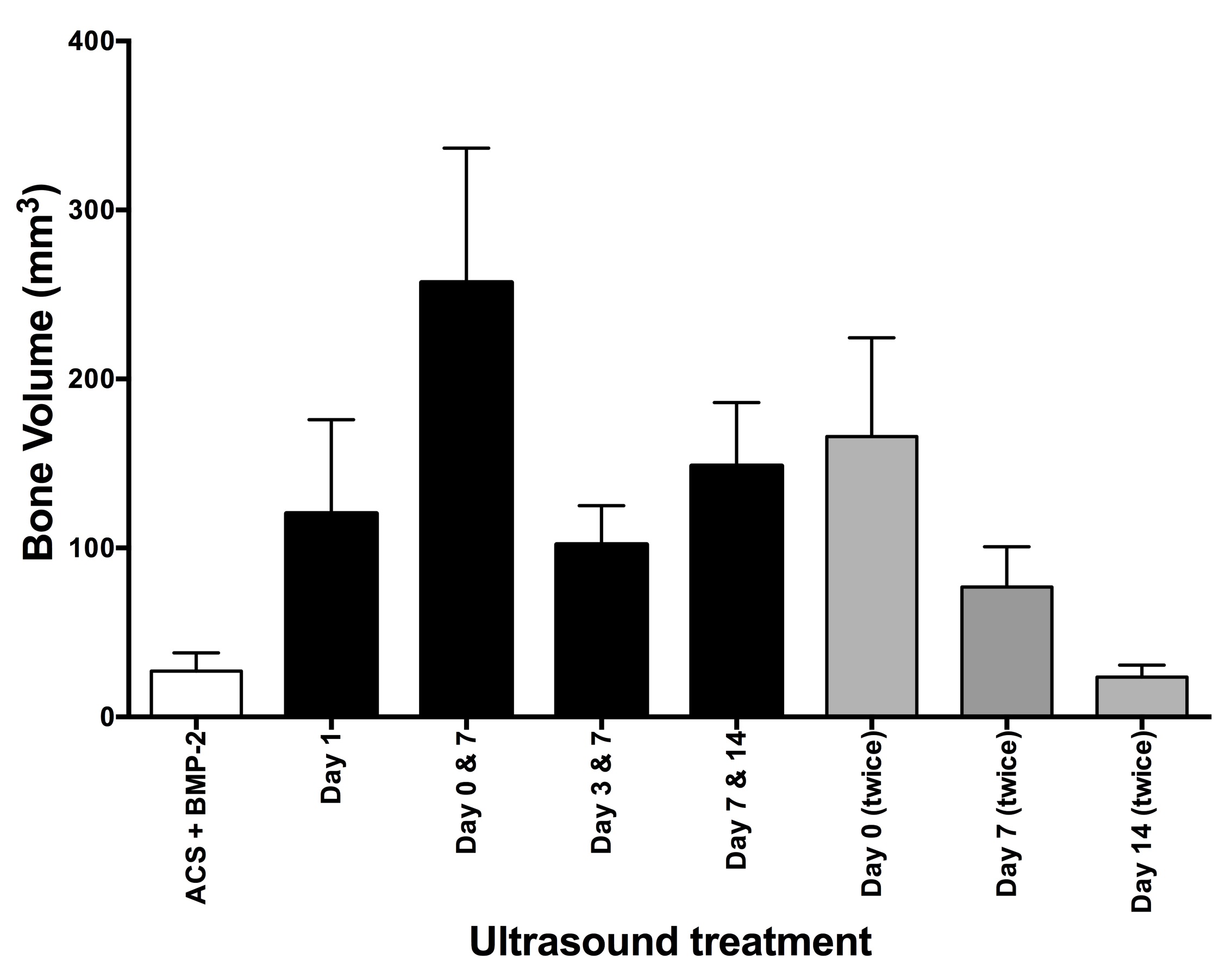Introduction: Recombinant bone morphogenetic protein 2 (BMP) implants can be an effective alternative to autogenous bone grafts. These advantages are offset, however, by cost and safety concerns due to the high initial dose of BMP required to compensate for its rapid release from the implant. To address this, we developed a novel protein delivery system, where liposomes sequester BMP at the bone defect site, until it is released by application of clinical ultrasound (US).
Materials and Methods: We screened and characterized physical, chemical and ultrasound release properties of nine different liposome formulations. In vitro, release of BMP from liposomes was assessed following US exposure by varying exposure, pressure and frequency of US. Bone induction by the BMP-liposomes was evaluated in vivo in a mouse muscle pouch model. 16 groups of 10 mice each were implanted with BMP-containing liposomes and subjected to different US exposure profiles: single US treatment on day 0, 7 or 14 or dual exposure to US on day 0 and 7, or day 7 and 14, or twice on day 0, day 7 or day 14. The mice were harvested 28 days post last US treatment and micro CT and histology were used to quantitatively and qualitatively measure newly induced bone.
Results: In vitro, Increase in pressure, frequency and time resulted in increased release of bioactive BMP-2 from liposomes. In vivo, animal studies revealed only US triggered release of BMP-2 from liposomes induced bone formation. Most importantly no bone formation was detected in mice containing BMP-liposomes that did not receive US. Enhanced bone formation was observed in groups where implants received two US treatments (Fig. 2) on day 0 and 7 instead of a single treatment (Fig. 1) on day 0, 7 or 14 or two treatments on the same day . The study further demonstrates BMP-liposomes can be used to control deliver BMP, additionally multiple early timed release of BMP results in enhanced bone formation.


Conclusions: We have developed an implant that induces bone formation on US triggered controlled release of BMP-2 from liposomes. Additionally multiple rounds of US exposure increased bone formation compared to single exposure.
G.J.C. was supported by NSERC Ph.D. Scholarship, Canadian Arthritis Network- The Arthritis Society Ph.D. Scholarship, Gerald Baker Oral Surgery Scholarship, Faculty of Dentistry- Harron Scholarship, Ontario Graduate Student-Science and Technology Scholarship.; Funding was provided by Dental Faculty Research Grant (DFRG).; Materials were provided by Induce Biologics Inc.